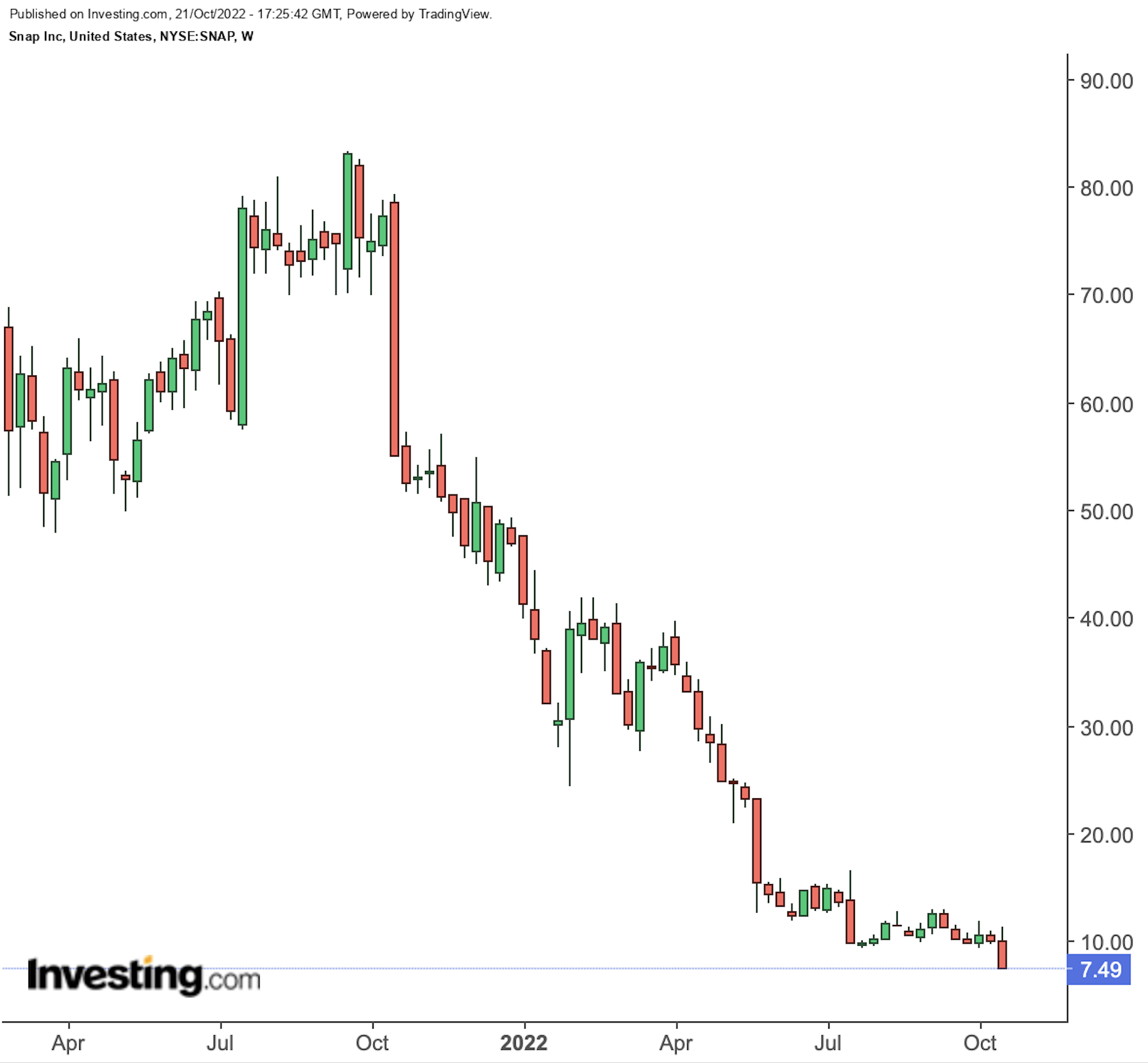- Snap reported its slowest quarterly sales growth ever last night
- Shares have tumbled nearly 85% this year, wiping out $88 billion from its market cap
- The Snapchat app, however, is still very popular with young people—as numbers show
Even with the bar set remarkably low, Snap Inc (NYSE:SNAP) managed to produce yet another disappointing earnings report yesterday. The owner of the Snapchat app reported its slowest quarterly sales growth ever, blaming an environment where companies are driven to slash their advertising spending.
The California-based company said third-quarter sales increased 6% to $1.13 billion, slightly short of analysts’ average estimate of $1.14 billion. But the biggest disappointment is that the social media company is failing to find a direction even after spending the past quarter realigning its priorities to deal with a tough macro environment.
And that’s not all. Snap added in its earnings statement last night:
“[Revenue growth] continues to be impacted by a number of factors we have noted throughout the past year, including platform policy changes, macroeconomic headwinds, and increased competition.
We are finding that our advertising partners across many industries are decreasing their marketing budgets, especially in the face of operating environment headwinds, inflation-driven cost pressures, and rising costs of capital.”
Snap’s earnings report is the first from big internet companies, including Alphabet (NASDAQ:GOOGL) and Meta Platforms (NASDAQ:META). Analysts now believe that the miss could suggest that the worst may not yet be over for the sector that thrived during the pandemic.
Snap stock was down as much as 30% at the time of writing to trade at $7.49 a share. Snap shares have tumbled nearly 85% this year, slashing the company’s market cap to just $12.37 billion from more than $100 billion a year ago.

Fierce Competition
A plunge of this magnitude raised the question of whether this is a buying opportunity for growth-focused investors. After all, the Snapchat app is still very popular with young people for sending disappearing messages and augmenting videos with special effects. It ended the quarter with 363 million daily active users, up 57 million from a year earlier.
Despite this massive subscriber base, Snap’s revenue outlook is becoming gloomier, suggesting that top-line growth will be hard to come by for at least a few years.
The average revenue per user fell 11% in the previous quarter to $3.11, missing the $3.19 average analyst projection.
In addition, users in the U.S., the company’s most lucrative market, are spending less time watching content on Snapchat, a clear sign that fierce competition from Chinese-owned TikTok has begun to hurt.
Furthermore, new privacy settings from Apple (NASDAQ:AAPL) that require all social media companies to get smartphone users’ permission for tracking continue to make it more difficult for advertisers to measure and manage their ad campaigns on social platforms.
Highlighting these challenges, Bernstein analysts downgraded the social media stock to market perform from outperform, saying Snap has lost its growth momentum. In a note to clients, the equity research firm said:
“With a stock down -85% over the past 12 months, suggesting that investor expectations were low going into earnings is an understatement. Yet low expectations offered no support for a company that seems to have lost all momentum.”
Morgan Stanley, which is underweight on the company, said in a post-earnings note that Snap stock represents “a high execution risk with management/strategic change” against a more challenging economic backdrop.
Bottom Line
Despite the massive beating in the current market downturn, Snap is still far from offering an effective growth plan for long-term investors. Furthermore, the company will likely continue to face budget cuts from advertisers, and there is little visibility of when that environment will improve.
You’re better off not trying to catch this falling knife.
Disclosure: At the time of writing, the author doesn’t own any shares mentioned in this report. The views expressed in this article are solely the author’s opinion and should not be taken as investment advice.
